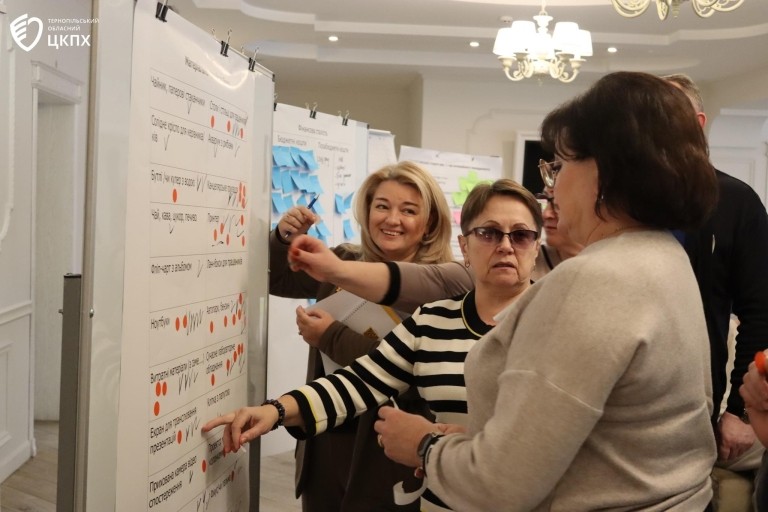Blog
Adapting Pact’s capacity development approach to public health in Ukraine

Last month, Pact launched a comprehensive approach to evaluate and enhance the technical and organizational capacities of public medical institutions, specifically the regional Centers for Disease Control (rCDCs) under the Ministry of Health of Ukraine.
The activity is part of the USAID-funded Public Health System: Recovery and Resilience project, or PHS R&R. The five-year project aims to strengthen the Government of Ukraine’s capacity to prevent, detect and respond to public health threats; sustain critical public health services during crisis; protect the health of all Ukrainians, including vulnerable and marginalized populations; and expand mental health support to war-affected populations. By applying a whole systems approach to assist the government to improve core national and regional public health capacities to address health challenges during wartime and the post-war future, PHS R&R supports long-term national health security and stability in Ukraine.
A pivotal component of this initiative is the Innovative — for Ukrainian Public Health Sector — Technical and Organizational Capacity Assessment (ITOCA) tool, a collaborative creation involving leadership teams from five rCDCs and the National Center for Public Health. The tool serves as a catalyst for the Centers, aiding them in pinpointing their unique needs for capacity strengthening, prioritizing areas for improvement and formulating precise action plans to drive positive change. What sets the ITOCA tool apart is its tailored design, specifically crafted to align with the nuances of the Ukrainian context and the distinctive characteristics of rCDCs.
The ITOCA process goes beyond a mere evaluation; it fosters unity within the entire team at rCDCs. By gathering insights and experiences from each team member, this collaborative effort not only measures the level of capacity within the Centers but also gauges the consensus among team members, creating a holistic understanding of their collective vision.
In tandem with ITOCA, Pact has incorporated the USAID-endorsed Government Performance Index (GPI) to support the progress of rCDCs in enhancing their overall performance. This multifaceted approach not only identifies areas for improvement but also measures the effectiveness of interventions aimed at elevating the capabilities of these public health institutions. As rCDCs strengthen their capacities, the ripple effect is felt in the quality and efficiency of healthcare services delivered to communities.
The adaptation of the GPI under the project reflects a commitment to aligning with international Joint External Evaluation (JEE) standards while taking into account the unique nuances of the Ukrainian public health landscape. This strategic adjustment ensures that the GPI is not only internationally relevant but also finely tuned to the specific characteristics of the Ukrainian context.
A key feature of this adapted GPI is its emphasis on objectivity, necessitating the provision of concrete evidence and thorough verification throughout the measurement process. By adhering to rigorous standards and verification procedures, we aim to establish a robust and reliable assessment mechanism that accurately reflects the performance and progress of public health institutions in Ukraine.
In the broader scope, the implementation of ITOCA and GPI within the framework of Pact's capacity development initiatives plays a pivotal role in advancing public health outcomes across Ukraine.
“By honing in on the specific needs of regional Centers for Disease Control, ITOCA becomes a guiding force, allowing these institutions to not only identify areas for improvement but also enact strategic changes,” says Ruslan Savchuck, the Director for Ivano-Frankivsk Center for Disease Control and Prevention, which was the first center to launch this process.
This tailored approach, coupled with the objective metrics of the GPI, serves as a powerful catalyst for overall performance enhancement. Ultimately, this comprehensive strategy not only transforms the internal dynamics of rCDCs but also contributes significantly to the overarching goal of fostering healthier communities and shaping a more resilient public health landscape in Ukraine.